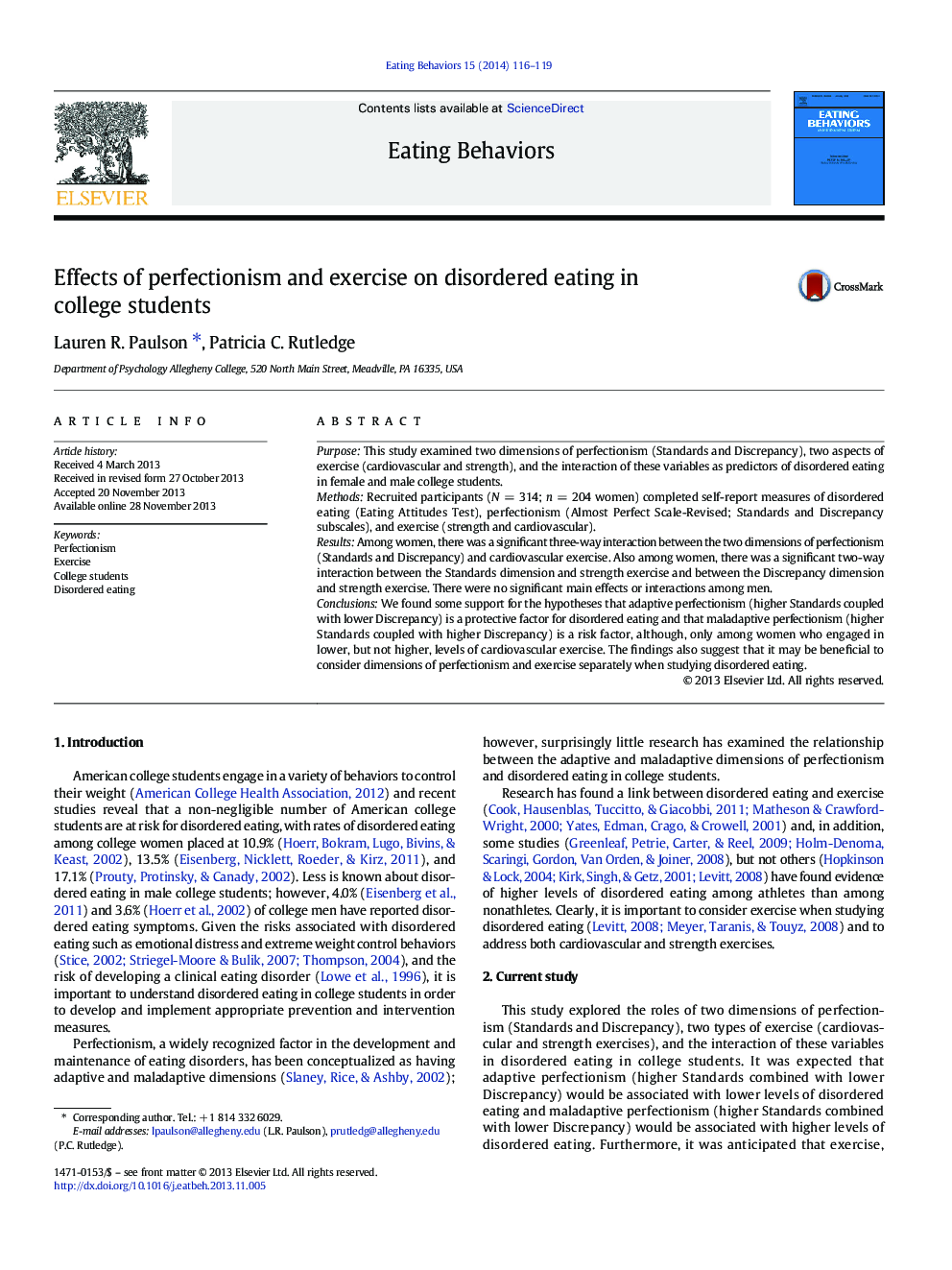| Article ID | Journal | Published Year | Pages | File Type |
|---|---|---|---|---|
| 906436 | Eating Behaviors | 2014 | 4 Pages |
•We examine two dimensions of perfectionism and two aspects of exercise.•In females, we observed a complex relationship among the study variables.•There was a three-way interaction between perfectionism and cardio exercise.•Perhaps dimensions of perfectionism and exercise should be studied separately.
PurposeThis study examined two dimensions of perfectionism (Standards and Discrepancy), two aspects of exercise (cardiovascular and strength), and the interaction of these variables as predictors of disordered eating in female and male college students.MethodsRecruited participants (N = 314; n = 204 women) completed self-report measures of disordered eating (Eating Attitudes Test), perfectionism (Almost Perfect Scale-Revised; Standards and Discrepancy subscales), and exercise (strength and cardiovascular).ResultsAmong women, there was a significant three-way interaction between the two dimensions of perfectionism (Standards and Discrepancy) and cardiovascular exercise. Also among women, there was a significant two-way interaction between the Standards dimension and strength exercise and between the Discrepancy dimension and strength exercise. There were no significant main effects or interactions among men.ConclusionsWe found some support for the hypotheses that adaptive perfectionism (higher Standards coupled with lower Discrepancy) is a protective factor for disordered eating and that maladaptive perfectionism (higher Standards coupled with higher Discrepancy) is a risk factor, although, only among women who engaged in lower, but not higher, levels of cardiovascular exercise. The findings also suggest that it may be beneficial to consider dimensions of perfectionism and exercise separately when studying disordered eating.
